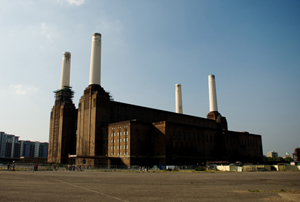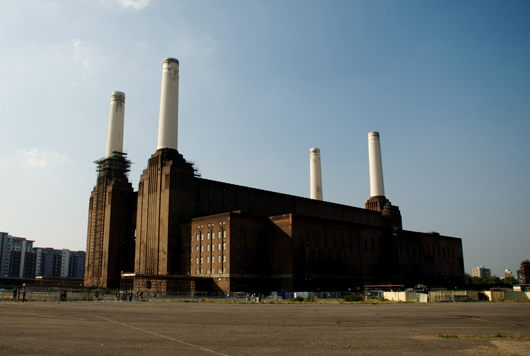
LONDON (AFP) – With its four white chimneys and solid brick base, Battersea Power Station is London’s most iconic industrial building. But 30 years after closing down, it still eludes efforts to give it a future.
There has been no shortage of ideas or candidates to renovate the building, which was erected in 1933 on the south bank of the River Thames and immortalized on the cover of Pink Floyd’s 1977 album “Animals.”
But whether the aim was to create a commercial center or a leisure park, every grand plan has collapsed, usually in a sea of debt.
Irish developers REO were the latest to try their luck with a £5.5-billion ($8.7 billion, 6.6 billion euro) project to turn the former coal-fired powerstation into shops, office space and leisure facilities.
They went into administration in December, owing debts of £324 million, leaving Battersea standing once again as a symbol of London’s industrial past and a rare bulwark against the relentless development of the British capital.
Some Londoners think the building’s time has now come.
“Knock it down!” said Stephen Bayley, one of the founders of the Design Museum, which once considered moving into the decommissioned power station.
“I live close by and, of course, I enjoy Battersea Power Station’s strange, melancholy presence. But cities have to evolve and change, otherwise they are dead.”
He condemned the “misguided and misdirected nostalgia” of those who wanted to keep it standing for history’s sake, telling AFP: “The brutal fact is no one can afford to restore Battersea Power Station.
“It is one of the biggest brick structures in the world and is in terrible condition: Every joint needs to be repointed.”
The land around Europe’s largest brick building is also polluted and would require expensive decontamination work to make it habitable.
Battersea was built by the architect Giles Gilbert Scott, the man behind Britain’s famous red telephone boxes and Bankside, another London powerstation which was reincarnated as the hugely popular Tate Modern gallery.
Battersea’s chimneys resemble antique columns, while inside are fine examples of art deco design, including a hall with walls of Italian marble.
Paddy Pugh, a planning director at conservation body English Heritage, is horrified at suggestions that it should be destroyed.
“Battersea Power Station is such a powerful architectural symbol in London that it’s almost inconceivable that it would be demolished,” he said.
Despite the work required, Pugh argues it is a “strong, robust building” and can be brought back into use, whether as a commercial centrr, flats or a leisure park.
Even top English Premier League football club Chelsea has expressed an interest in acquiring the site.
Pugh notes that Battersea, the area around the power station, is also becoming more attractive.
Sitting across the river from the wealthy Chelsea district, it will soon be home to the new U.S. embassy and there are plans to extend the Underground train network.
Several new developments of riverside flats have sprung up along the south bank of the Thames in recent years, but the site around Battersea Power Station remains an unattractive industrial zone.
“For us, the most important thing is that the power station should be repaired and brought back into some sort of use. Now what that use is, we are very open to suggestions,” Pugh told AFP.
The football stadium idea does not go down well with the community group set up when the power station closed in 1983.
“Battersea Power Station should be mostly about work and about culture,” said architect Keith Garner, a member of the group. “It is world-famous, and for companies, particularly in the creative or media sector, it is a very good address to have.”
He cited other renovations, including Fiat’s Lingotto factory in Turin and the Dean Clough factory buildings in Halifax, northern England, as examples of what can be achieved.
“In a rich city like London there is no excuse for the fact that in nearly 30 years nothing has been achieved,” he said.
ADDITIONAL IMAGE OF NOTE


